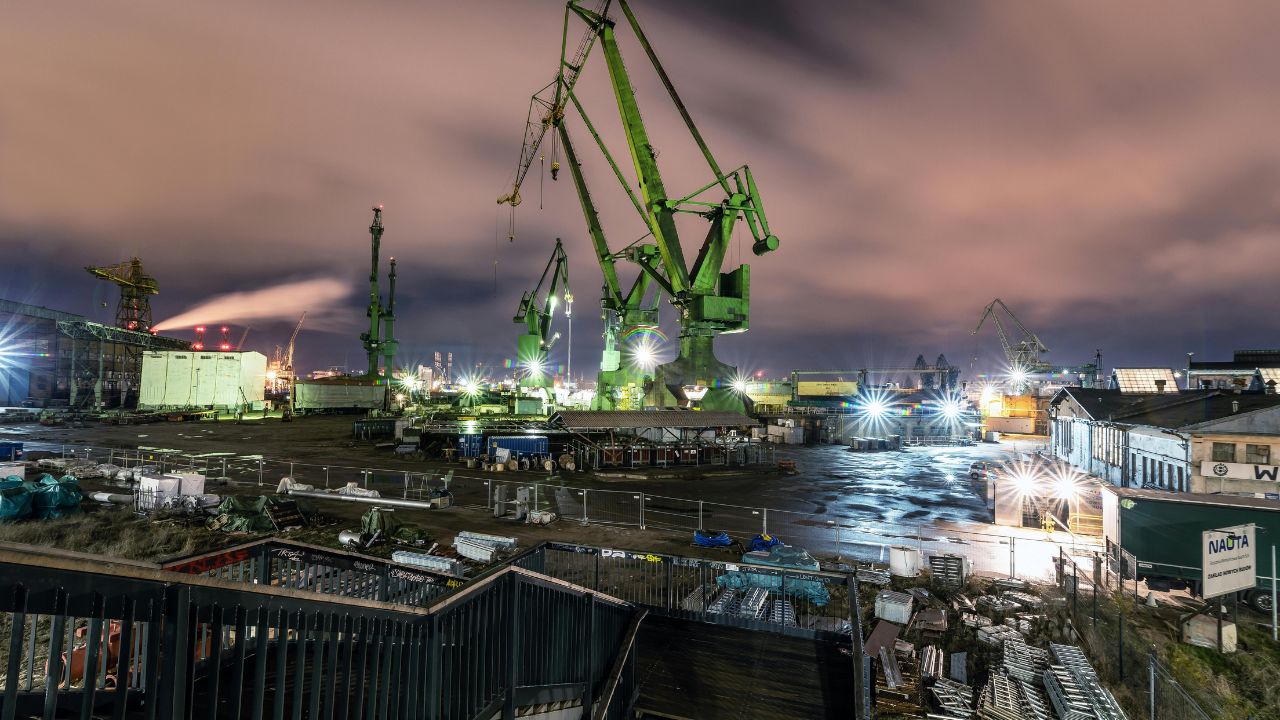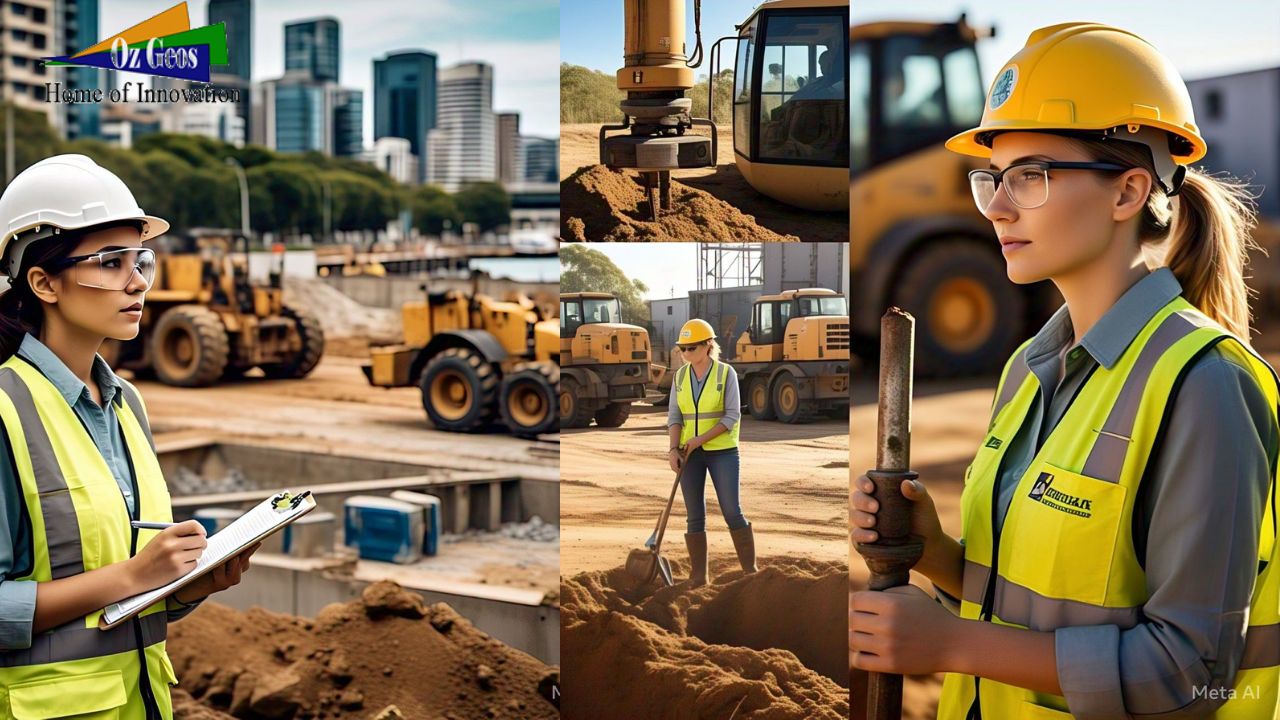The Importance of Geotechnical Site Investigation in Construction Projects
Introduction
Geotechnical site investigation is a crucial step in the planning and execution of any construction project. It involves the collection and analysis of data related to the physical properties of soil and rock beneath a proposed construction site. This information is vital for the design and construction of safe, stable, and sustainable structures. At OzGeos, we understand the significance of comprehensive geotechnical site investigations and their impact on the success of construction projects. In this blog, we will delve into the importance of geotechnical site investigation, its various components, and how it benefits construction projects.
Understanding Geotechnical Site Investigation
Geotechnical site investigation, also known as subsurface exploration, involves a series of activities aimed at determining the soil, rock, and groundwater conditions at a construction site. The primary objectives are to identify potential geotechnical hazards, assess the engineering properties of subsurface materials, and provide recommendations for the design and construction of foundations, retaining walls, and other structures.
Key Components of Geotechnical Site Investigation
- Desk Study: The initial phase of a geotechnical investigation involves a desk study, where existing information about the site is collected and reviewed. This may include geological maps, aerial photographs, previous investigation reports, and historical data. The desk study helps in identifying potential geotechnical issues and planning the subsequent fieldwork.
- Site Reconnaissance: Following the desk study, a site reconnaissance is conducted to visually inspect the site and its surroundings. This involves observing the topography, drainage patterns, existing structures, vegetation, and any signs of instability or erosion. Site reconnaissance provides valuable insights into the site conditions and helps in planning the detailed investigation.
- Field Investigation: The core of geotechnical site investigation is the field investigation, which involves drilling boreholes, excavating test pits, and performing in-situ tests. The purpose is to obtain soil and rock samples, measure groundwater levels, and assess the engineering properties of subsurface materials. Common field investigation techniques include:
Borehole Drilling: Boreholes are drilled at selected locations to retrieve soil and rock samples at various depths. Standard Penetration Tests (SPT) and Cone Penetration Tests (CPT) are often conducted within boreholes to measure soil resistance and strength.
Test Pits: Shallow test pits are excavated to directly observe and sample the soil and rock. This method is useful for studying the upper layers of the subsurface and identifying near-surface hazards.
Geophysical Surveys: Non-invasive geophysical methods, such as seismic refraction, ground-penetrating radar (GPR), and electrical resistivity tomography (ERT), are used to map subsurface conditions and detect anomalies.
In-situ Testing: Various in-situ tests, such as vane shear tests, pressuremeter tests, and plate load tests, are performed to evaluate the strength, stiffness, and deformation characteristics of soils. - Laboratory Testing: Soil and rock samples collected during the field investigation are subjected to laboratory testing to determine their physical and mechanical properties. Common laboratory tests include grain size analysis, Atterberg limits, compaction tests, triaxial shear tests, and consolidation tests. These tests provide essential data for geotechnical analysis and design.
- Data Analysis and Interpretation: The data collected from the desk study, site reconnaissance, field investigation, and laboratory testing are analyzed and interpreted to develop a comprehensive understanding of the subsurface conditions. Geotechnical engineers use this information to assess the suitability of the site for the proposed construction, identify potential hazards, and provide design recommendations.
Benefits of Geotechnical Site Investigation
- Ensuring Safety and Stability: The primary benefit of geotechnical site investigation is ensuring the safety and stability of structures. By understanding the subsurface conditions, engineers can design foundations and other structural elements that can withstand the loads and environmental forces they will be subjected to. This minimizes the risk of settlement, subsidence, and structural failure.
- Cost-Effective Design: Geotechnical site investigation provides accurate data on soil and rock properties, enabling engineers to design cost-effective foundations and retaining structures. Without proper investigation, designers may adopt overly conservative designs, leading to unnecessary construction costs. Conversely, underestimating geotechnical conditions can result in costly remediation and repairs.
- Identifying and Mitigating Risks: Geotechnical investigations help identify potential risks such as soil liquefaction, landslides, ground subsidence, and groundwater seepage. Early identification of these hazards allows for the implementation of appropriate mitigation measures, reducing the likelihood of construction delays, damage to structures, and safety incidents.
- Optimizing Construction Methods: Knowledge of subsurface conditions informs the selection of suitable construction methods and equipment. For example, understanding soil characteristics can guide the choice of excavation techniques, dewatering methods, and ground improvement measures. This ensures efficient and safe construction practices.
- Compliance with Regulations: Geotechnical site investigations are often required by building codes and regulations. Adhering to these requirements ensures compliance with legal and safety standards, avoiding potential legal liabilities and project delays.
- Enhancing Project Planning: Comprehensive geotechnical data aids in project planning by providing insights into site conditions, construction feasibility, and potential challenges. This information is invaluable for project managers, architects, and contractors in developing realistic schedules, budgets, and contingency plans.
Case Studies Highlighting the Importance of Geotechnical Site Investigation
Case Study 1: High-Rise Building in a Coastal Area
In a coastal city, a high-rise residential building was planned on a site with suspected loose sand deposits and a high water table. A detailed geotechnical investigation, including borehole drilling, CPT, and geophysical surveys, was conducted. The investigation revealed the presence of loose, saturated sands prone to liquefaction during seismic events. Based on these findings, the foundation design was modified to include deep pile foundations extending into stable strata, and ground improvement techniques, such as vibro-compaction, were implemented to mitigate liquefaction risks. This proactive approach ensured the safety and stability of the building while avoiding costly post-construction remediation.
Case Study 2: Infrastructure Development on a Sloping Terrain
A major infrastructure project, involving the construction of a highway and bridges, was planned on a hilly terrain with steep slopes. Geotechnical site investigation, including slope stability analysis and rock mass characterization, was carried out to assess the risk of landslides and rockfalls. The investigation identified several unstable slopes and weak rock zones. Appropriate slope stabilization measures, such as retaining walls, rock bolts, and drainage systems, were designed and implemented. This ensured the long-term stability and safety of the highway, preventing potential landslides and road closures.
Conclusion
Geotechnical site investigation is an indispensable part of any construction project. It provides essential data on subsurface conditions, enabling engineers to design safe, stable, and cost-effective structures. By identifying potential hazards and informing construction methods, geotechnical investigations minimize risks, enhance project planning, and ensure compliance with regulations. At OzGeos, we are committed to delivering comprehensive geotechnical site investigations tailored to the specific needs of our clients. Our expertise and innovative solutions ensure the success of construction projects, from small residential buildings to large-scale infrastructure developments.
Investing in thorough geotechnical site investigations is a wise decision that pays off in the long run. It not only ensures the safety and stability of structures but also optimizes construction methods, reduces costs, and mitigates risks. For more information on how OzGeos can assist with your geotechnical needs, visit our website or contact us today.































